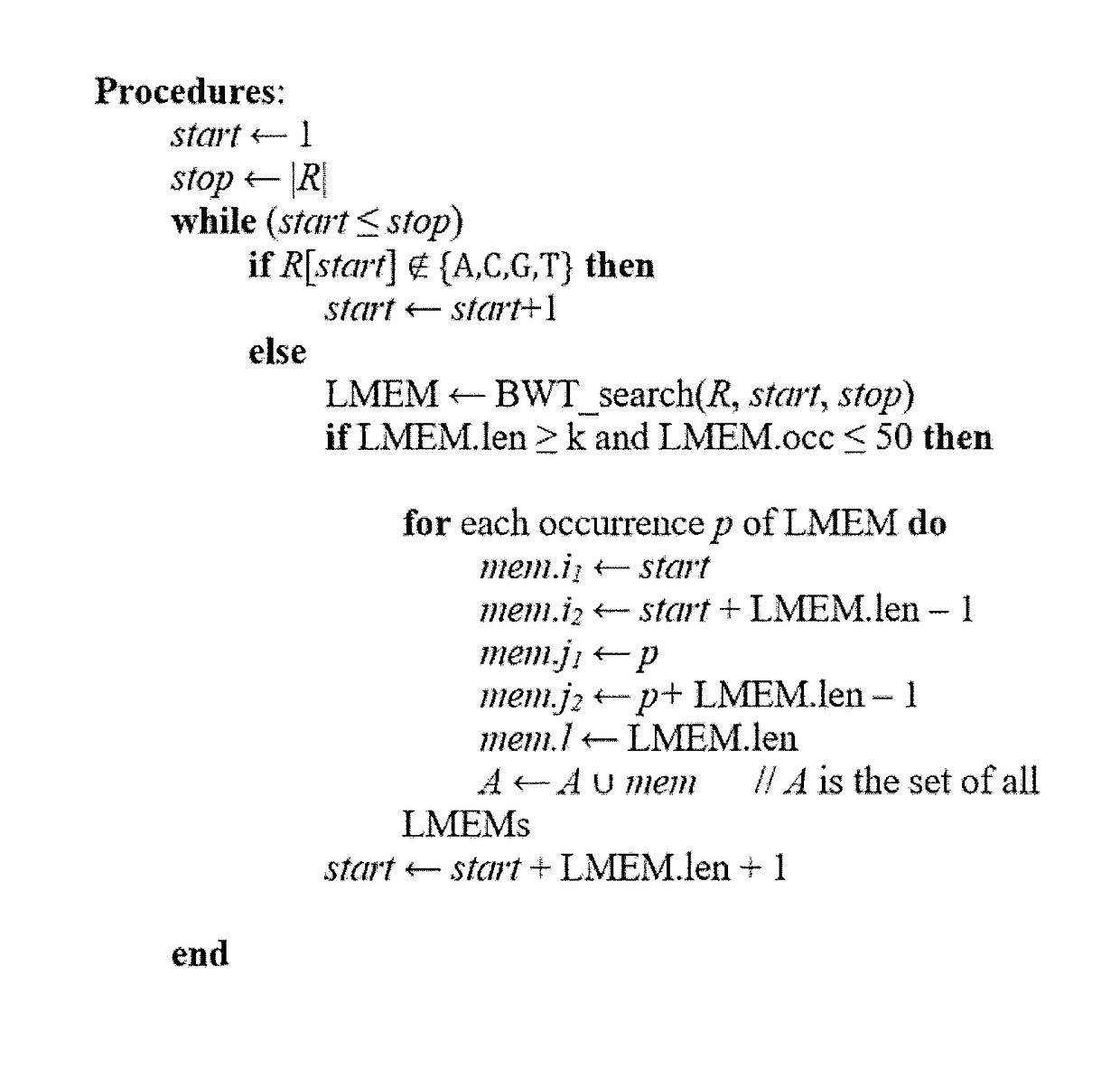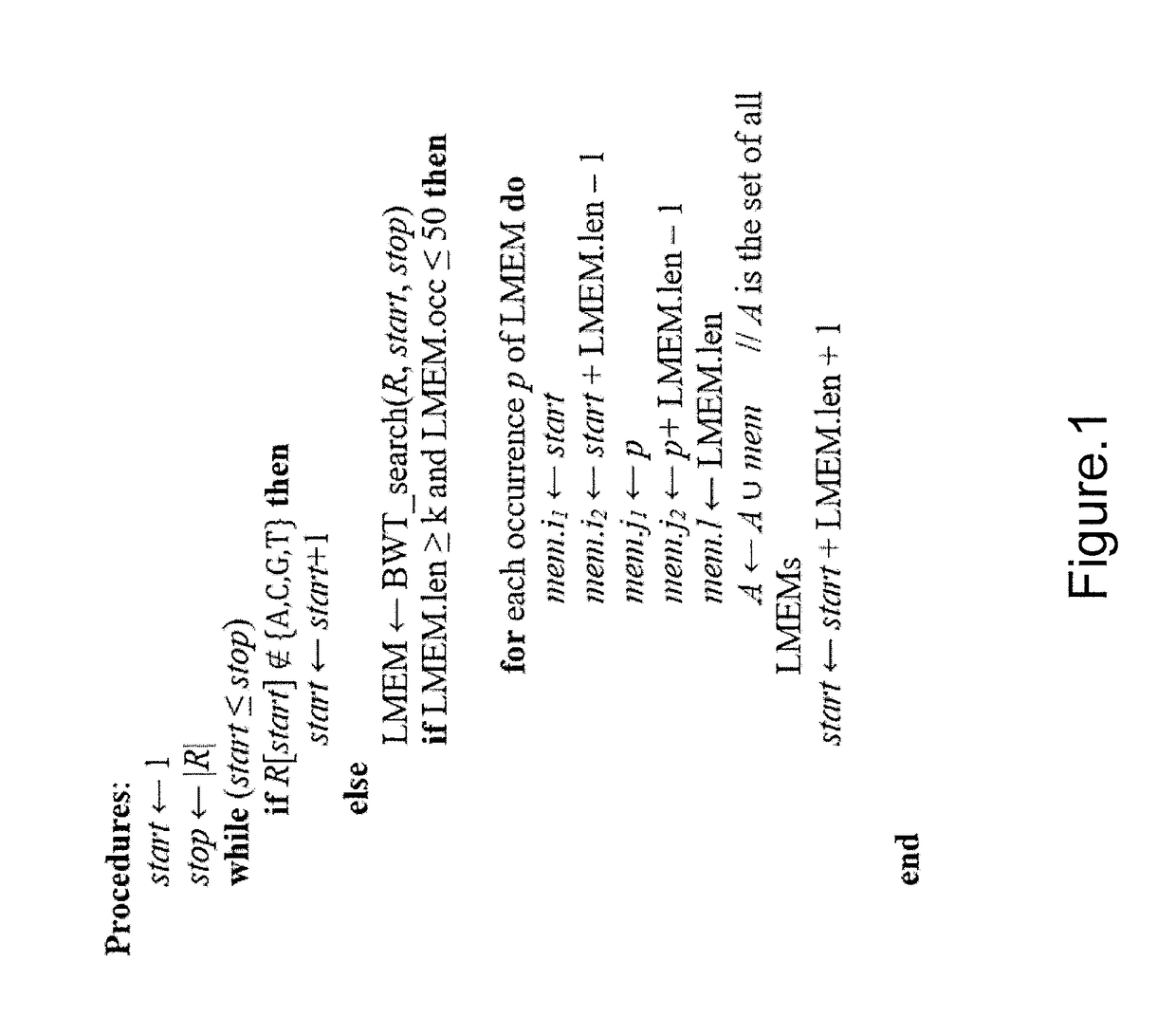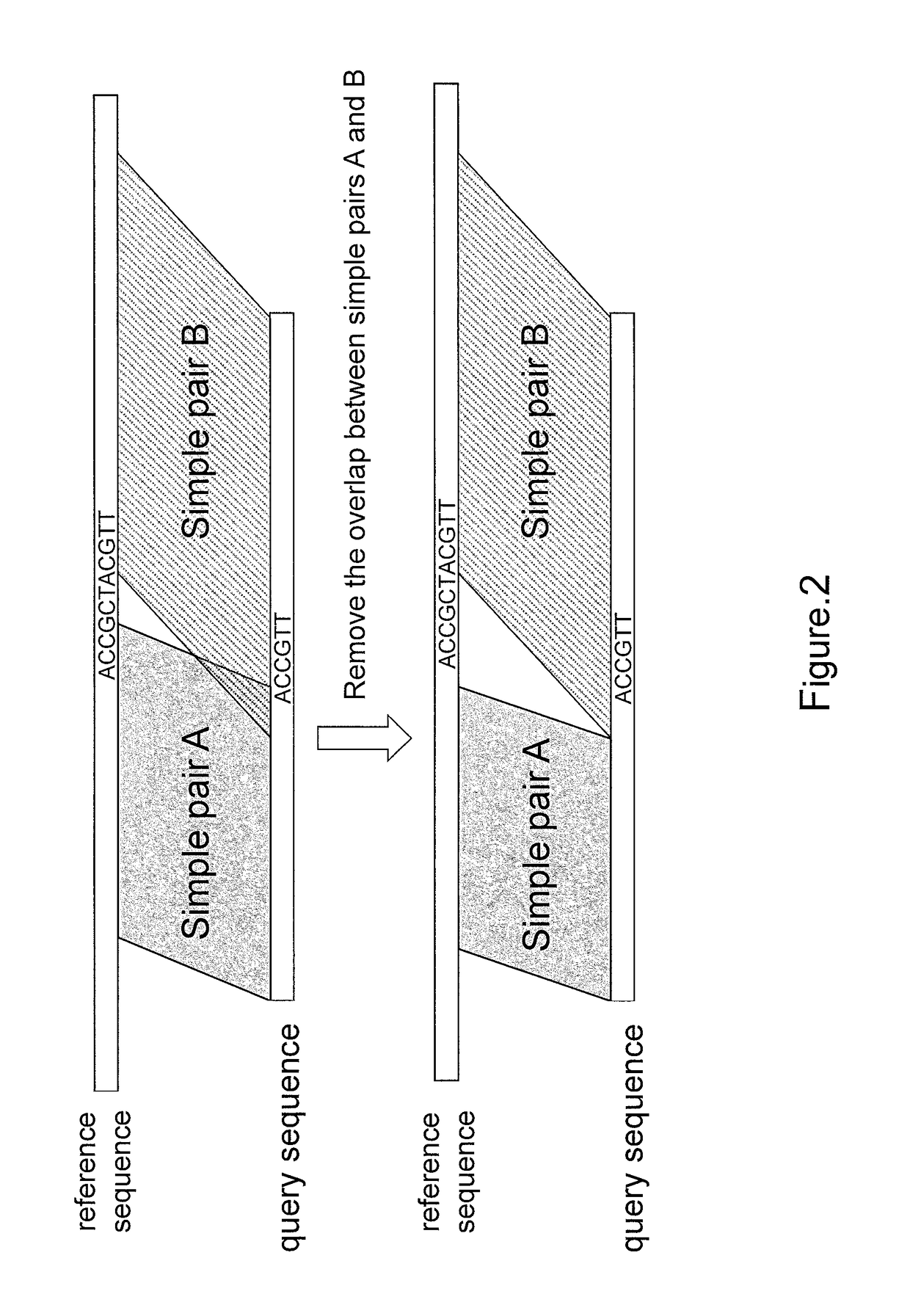Divide-and-conquer global alignment algorithm for finding highly similar candidates of a sequence in database
a global alignment and database technology, applied in relational databases, database models, instruments, etc., can solve problems such as tolerating much higher error rates, and achieve the effects of reliable alignment, less time, and high error rates
- Summary
- Abstract
- Description
- Claims
- Application Information
AI Technical Summary
Benefits of technology
Problems solved by technology
Method used
Image
Examples
Embodiment Construction
[0014]Most traditional global alignment algorithms for finding similar candidates of a sequence in sequence database adopt seed-and-extension approach, which is based on a sequential dynamic programming algorithm. This invention gives a divide-and-conquer algorithm called Kart, that separates the given sequence into smaller pieces whose alignment can be carried out independently and in parallel, and their concatenated alignment constitutes the global alignment of the entire sequence. Kart could be viewed as aligning multiple seeds simultaneously in parallel. We illustrate the idea using the read mapping of Next-generation sequencing (NGS) as an example.
[0015]Reference will now be made in detail to the preferred embodiments of the present invention, examples of which are illustrated in the accompanying drawings. Wherever possible, the same reference numbers are used in the drawings and the description to refer to the same or like parts.
Methods
Overview of Algorithms
[0016]Most suffix / B...
PUM
 Login to view more
Login to view more Abstract
Description
Claims
Application Information
 Login to view more
Login to view more - R&D Engineer
- R&D Manager
- IP Professional
- Industry Leading Data Capabilities
- Powerful AI technology
- Patent DNA Extraction
Browse by: Latest US Patents, China's latest patents, Technical Efficacy Thesaurus, Application Domain, Technology Topic.
© 2024 PatSnap. All rights reserved.Legal|Privacy policy|Modern Slavery Act Transparency Statement|Sitemap



